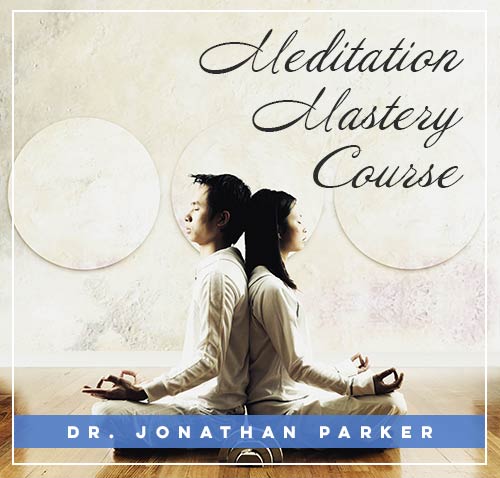Navigating the Meditation Process

Looking for more amazing products? Check out our online store and explore our collection here! Happy shopping!
Before diving in, please note: This post is for informational purposes only. If you’d like to know more about how we approach topics, feel free to check out our friendly Disclaimer Page.
Hey there, amazing readers! 
We’re committed to delivering quality posts, and your support (even just sticking around despite the ads) means everything to us. So, bear with us, and thanks for helping us keep the good vibes rolling. Now, on to the fun stuff!
TRANSLATE BUTTON AT THE END OF THE ARTICLE
A Quick Overview
Meditation is a practice that has been around for centuries and is known for its numerous mental and physical health benefits.
It involves focusing the mind and eliminating distractions to achieve a state of inner peace and relaxation.
Navigating the meditation process can be challenging for beginners, but with the right techniques and guidance, anyone can master this ancient practice.
In this article, we will explore the basics of meditation, setting up a comfortable meditation space, breathing techniques, focusing the mind, dealing with distractions, different meditation styles, establishing a routine, incorporating mindfulness, tracking progress, troubleshooting challenges, seeking guidance, and cultivating patience and persistence in meditation.
Understanding the Basics of Meditation
What is Meditation? Meditation is a mental practice that involves focusing the mind on a particular object, thought, or activity to achieve a state of relaxation and inner peace.
It is often used to reduce stress, improve concentration, and enhance overall well-being.
Benefits of Meditation: Some of the benefits of meditation include reduced anxiety and depression, improved emotional health, enhanced self-awareness, increased attention span, and better sleep quality.
Types of Meditation: There are various types of meditation practices, including mindfulness meditation, loving-kindness meditation, transcendental meditation, and guided visualization.
Each type has its unique focus and techniques.
How to Meditate: To meditate, find a quiet and comfortable place to sit or lie down, close your eyes, and focus on your breath or a specific mantra.
Allow your thoughts to come and go without judgment.
Duration of Meditation: Beginners may start with just a few minutes of meditation each day and gradually increase the duration as they become more comfortable with the practice.
Setting Up a Comfortable Meditation Space
Choose a Quiet Location: Select a quiet and peaceful location in your home where you can meditate without distractions.
This could be a spare room, a corner of a quiet room, or even outdoors.
Comfortable Seating: Use a cushion or chair that supports your back and allows you to sit comfortably for an extended period.
You may also use blankets or pillows to make your seating arrangement more comfortable.
Decorate Mindfully: Decorate your meditation space with items that promote relaxation and calmness, such as candles, incense, or soothing artwork.
Keep the space clutter-free and organized.
Natural Light and Air: If possible, choose a space with natural light and good air circulation.
Open a window or use essential oils to create a pleasant atmosphere.
Personal Touch: Add personal touches to your meditation space, such as photos, crystals, or plants, to make it feel welcoming and personalized.
Breathing Techniques for Meditation
Deep Breathing: Deep breathing is a common technique used in meditation to help relax the body and calm the mind.
Inhale deeply through your nose, hold for a few seconds, and exhale slowly through your mouth.
Counting Breaths: Another technique is to count your breaths as you inhale and exhale.
This can help focus the mind and prevent distractions.
Diaphragmatic Breathing: Practice diaphragmatic breathing by focusing on expanding your belly as you inhale and contracting it as you exhale.
This can help reduce stress and anxiety.
Equal Breathing: Inhale and exhale for the same duration, such as counting to four for both inhalation and exhalation.
This can create a sense of balance and calm.
Alternate Nostril Breathing: This technique involves closing one nostril with your finger and inhaling and exhaling through the other nostril.
It can help balance the body’s energy channels.
Focusing the Mind During Meditation
Mantra Meditation: Repeat a mantra or word silently in your mind to help focus your attention and quiet the mental chatter.
Examples of mantras could be “peace,” “love,” or “om.”
Visualization: Visualize a peaceful scene or object in your mind’s eye, such as a serene beach or a blooming flower.
Focus on the details and let the image bring you a sense of calm.
Body Scan: Scan your body from head to toe, focusing on each body part and noticing any tension or discomfort.
Relax each muscle as you move through the body.
Focus on Breath: Concentrate on the sensation of your breath as it enters and leaves your body.
Notice the rise and fall of your chest or the feeling of air passing through your nostrils.
Sound Meditation: Pay attention to the sounds around you, such as birds chirping or the wind rustling through leaves.
Let the sounds wash over you without getting attached to them.
Dealing with Distractions in Meditation
Acknowledge and Release: When distractions arise during meditation, acknowledge them without judgment and gently let them go.
Refocus your attention on your breath or chosen object.
Labeling Thoughts: If your mind keeps wandering, try labeling your thoughts as “thinking” and then redirecting your focus back to your breath.
This can help distance yourself from the thoughts.
Acceptance: Accept that distractions are a natural part of meditation and that it’s okay to experience them.
Be patient with yourself and remember that the goal is not to eliminate distractions but to work with them.
Return to the Present: If you find yourself getting caught up in a distraction, gently bring your awareness back to the present moment.
Take a few deep breaths to ground yourself.
Practice Regularly: The more you practice meditation, the better you will become at managing distractions.
Over time, you will develop greater focus and concentration.
Exploring Different Meditation Styles
Mindfulness Meditation: This type of meditation involves being fully present in the moment and observing your thoughts and sensations without judgment.
It can help increase self-awareness and reduce stress.
Loving-Kindness Meditation: Also known as Metta meditation, this practice involves sending loving-kindness and compassion to yourself and others.
It can cultivate feelings of love, empathy, and connection.
Transcendental Meditation: Transcendental meditation uses a mantra to help transcend ordinary levels of consciousness and reach a state of pure awareness.
It is often practiced for 20 minutes twice a day.
Guided Visualization: In guided visualization, a meditation teacher or recording guides you through a series of visualizations to help relax the body and mind.
This can be helpful for beginners.
Body Scan Meditation: Body scan meditation involves bringing your awareness to each part of your body, starting from the head down to the toes.
It can help release tension and promote relaxation.
Establishing a Consistent Meditation Routine
Set a Schedule: Choose a specific time each day to meditate, whether it’s in the morning, during lunch break, or before bed.
Consistency is key to developing a meditation habit.
Start Small: Begin with just a few minutes of meditation each day and gradually increase the duration as you become more comfortable with the practice.
Even five minutes a day can make a difference.
Create a Ritual: Establish a pre-meditation ritual that helps signal to your mind and body that it’s time to meditate.
This could be lighting a candle, playing soothing music, or taking a few deep breaths.
Use Reminders: Set reminders on your phone or write it down in your calendar to ensure you don’t forget to meditate.
Treat it as an important appointment with yourself.
Be Flexible: Don’t be too hard on yourself if you miss a day of meditation.
Instead, acknowledge it and make an effort to get back on track the next day.
The key is to be consistent over time.
Incorporating Mindfulness into Meditation
Daily Mindfulness Practice: In addition to formal meditation sessions, practice mindfulness throughout your day by being fully present in whatever you’re doing.
This could be eating, walking, or talking to someone.
Mindful Breathing: Use your breath as an anchor to bring yourself back to the present moment whenever you feel distracted or overwhelmed.
Focus on the sensation of each inhale and exhale.
Mindful Eating: Pay attention to the flavors, textures, and smells of your food as you eat.
Chew slowly and savor each bite, being fully present in the experience.
Body Awareness: Tune into your body sensations throughout the day, noticing any tension, discomfort, or relaxation.
This can help you become more in tune with your physical and emotional states.
Gratitude Practice: Cultivate a sense of gratitude by reflecting on the things you appreciate in your life.
This can help shift your focus from negativity to positivity.
Tracking Progress in Meditation Practice
Keep a Meditation Journal: Record your daily meditation sessions in a journal, noting the date, duration, and any insights or experiences you had during the practice.
This can help you track your progress over time.
Use Meditation Apps: There are various meditation apps available that can track your meditation sessions, provide guided meditations, and offer insights into your practice.
Some popular apps include Headspace, Calm, and Insight Timer.
Set Goals: Establish specific goals for your meditation practice, such as meditating for a certain number of minutes per day or increasing your mindfulness throughout the day.
Check in regularly to assess your progress.
Reflect on Changes: Notice any changes in your mental, emotional, and physical well-being as you continue your meditation practice.
Reflect on how meditation has impacted your life and relationships.
Celebrate Milestones: Celebrate your milestones and achievements in your meditation practice, whether it’s completing a certain number of consecutive days of meditation or noticing improvements in your focus and awareness.
Troubleshooting Common Meditation Challenges
Restlessness: If you feel restless during meditation, try incorporating movement-based practices like yoga or tai chi before meditation to help calm the mind and body.
Sleepiness: If you find yourself falling asleep during meditation, try sitting up straighter, opening your eyes slightly, or meditating at a different time of day when you’re more alert.
Impatience: If you struggle with impatience during meditation, remind yourself that meditation is a practice and it takes time to see results.
Be kind and patient with yourself.
Overthinking: If your mind is filled with racing thoughts, try focusing on your breath or a mantra to redirect your attention.
Don’t get caught up in trying to stop the thoughts, just observe them.
Lack of Motivation: If you’re having trouble staying motivated to meditate, remind yourself of the benefits and reasons why you started meditating in the first place.
Connect with a supportive community or seek guidance from a teacher.
Seeking Guidance from Experienced Meditators
Join a Meditation Group: Consider joining a local meditation group or online community where you can connect with experienced meditators, share experiences, and receive guidance and support.
Attend Retreats or Workshops: Attend meditation retreats, workshops, or classes led by experienced teachers who can provide guidance, instruction, and personalized feedback on your practice.
Find a Meditation Teacher: Seek out a qualified meditation teacher or instructor who can offer personalized guidance, answer questions, and provide support as you navigate your meditation practice.
Read Books or Listen to Podcasts: Explore books, podcasts, and online resources on meditation by experienced teachers and practitioners to deepen your understanding and gain insights into different meditation techniques.
Practice Compassion: Remember that meditation is a journey, and it’s okay to seek guidance and support along the way.
Approach experienced meditators with an open heart and a willingness to learn.
Cultivating Patience and Persistence in Meditation
Embrace Imperfection: Accept that meditation is a practice that requires patience and persistence.
Allow yourself to be imperfect and make mistakes along the way.
It’s all part of the journey.
Practice Self-Compassion: Be kind and compassionate toward yourself as you navigate the ups and downs of meditation.
Treat yourself with the same kindness and understanding you would offer a friend.
Stay Committed: Stay committed to your meditation practice even when it feels challenging or when progress seems slow.
Trust in the process and continue showing up for yourself.
Celebrate Small Wins: Acknowledge and celebrate the small victories and improvements in your meditation practice, whether it’s sitting for an extra minute or noticing a moment of inner peace.
Trust the Process: Trust that the benefits of meditation will unfold over time with consistent practice.
Be patient with yourself, trust in the process, and allow yourself to grow and evolve through meditation.
Conclusion
Navigating the meditation process can be a transformative journey that leads to greater self-awareness, inner peace, and overall well-being.
By understanding the basics of meditation, setting up a comfortable meditation space, using breathing techniques, focusing the mind, dealing with distractions, exploring different meditation styles, establishing a routine, incorporating mindfulness, tracking progress, troubleshooting challenges, seeking guidance, and cultivating patience and persistence, you can deepen your meditation practice and experience its profound benefits.
Remember that meditation is a personal practice, and it’s essential to approach it with an open heart, curiosity, and a willingness to learn and grow.
With dedication and commitment, you can harness the power of meditation to cultivate a sense of inner calm and balance in your life.

The Enlightenment Journey is a remarkable collection of writings authored by a distinguished group of experts in the fields of spirituality, new age, and esoteric knowledge.
This anthology features a diverse assembly of well-experienced authors who bring their profound insights and credible perspectives to the forefront.
Each contributor possesses a wealth of knowledge and wisdom, making them authorities in their respective domains.
Together, they offer readers a transformative journey into the realms of spiritual growth, self-discovery, and esoteric enlightenment.
The Enlightenment Journey is a testament to the collective expertise of these luminaries, providing readers with a rich tapestry of ideas and information to illuminate their spiritual path.
Our Diverse Expertise
While our primary focus is on spirituality and esotericism, we are equally passionate about exploring a wide range of other topics and niches 

To ensure we provide the most accurate and valuable insights, we collaborate with trusted experts in their respective domains 
Our blog originally focused on spirituality and metaphysics, but we’ve since expanded to cover a wide range of niches. Don’t worry—we continue to publish a lot of articles on spirituality! Frequently visit our blog to explore our diverse content and stay tuned for more insightful reads.
Hey there, amazing reader! 
Check out our store here and take a peek at some of our featured products below! Thanks for being awesome!











